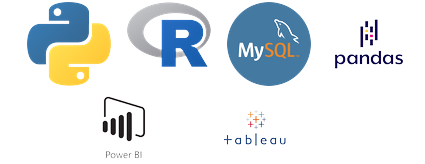Both functions perform linear regression (least-squares method) to calculate statistics for a straight line fitting your data. Here’s how they work:
1. LINEST Function
Fits a line using columns from a single table.
Syntax:
LINEST (
Y_column,
X_column,
[const], [stats]
)
Parameters:
Y_column: Dependent variable column (e.g., Sales)X_column: Independent variable column(s) (e.g., Advertising Spend)[const](Optional):TRUE/1: Include intercept (default)FALSE/0: Force intercept to zero[stats](Optional):TRUE/1: Return additional statistics (R², F-statistic, etc.)FALSE/0: Return only coefficients (default)
2. LINESTX Function
More flexible—works with tables filtered by DAX expressions or multiple tables.
Syntax:
LINESTX (
Table,
Y_expression,
X_expression,
[const], [stats]
)
Parameters:
Table: Table containing the dataY_expression: DAX expression for the dependent variableX_expression: DAX expression for the independent variable(s)
Examples
Example 1: Simple Linear Regression with LINEST
Data:
| Month | Advertising Spend | Sales |
|---|---|---|
| Jan | 1000 | 15000 |
| Feb | 2000 | 25000 |
| … | … | … |
DAX:
Simple Regression =
LINEST (
Sales[Sales], // Y-axis: Sales
Sales[Advertising Spend] // X-axis: Spend
)Output (Single-row table):
| Slope | Intercept |
|---|---|
| 10 | 5000 |
Equation:Sales = 10 * Advertising Spend + 5000
Example 2: Multiple Regression with LINESTX
Goal: Predict Sales using Advertising Spend and Discount %.
DAX:
Multiple Regression =
LINESTX (
Sales, // Table
Sales[Sales], // Y: Sales
Sales[Advertising Spend], // X1: Spend
Sales[Discount %] // X2: Discount
)Output:
| Slope_Spend | Slope_Discount | Intercept |
|---|---|---|
| 9.5 | -1000 | 6000 |
Equation:Sales = 9.5 * Spend - 1000 * Discount % + 6000
Example 3: Return Advanced Statistics
DAX:
Regression Stats =
LINESTX (
Sales,
Sales[Sales],
Sales[Advertising Spend],
TRUE, // Include intercept
TRUE // Return full statistics
)Output (Partial):
| Slope | Intercept | R² | StdError | F-statistic | … |
|---|---|---|---|---|---|
| 10 | 5000 | 0.95 | 120 | 450 | … |
Example 4: Forced Zero Intercept (const=FALSE)
DAX:
Zero Intercept =
LINEST (
Sales[Sales],
Sales[Advertising Spend],
FALSE // Force intercept=0
)Output:
| Slope |
|---|
| 12.5 |
Equation:Sales = 12.5 * Advertising Spend
Key Differences:
| Feature | LINEST | LINESTX |
|---|---|---|
| Input Flexibility | Columns only | DAX expressions |
| Table Handling | Single table | Works with filtered tables/context |
| Use Case | Simple column-based regression | Complex models (e.g., time filters) |
Practical Tips:
- Output is a Table: Always store results in a calculated table or use with
SELECTCOLUMNS. - Dynamic Analysis: Combine
LINESTXwithCALCULATETABLEto run regression on filtered data. - Slope Order: Coefficients appear in the order of X-columns provided.
- Statistics Columns: When
stats=TRUE, output includes 10+ columns (e.g., R², standard errors).
Real-World Use Cases:
- Forecast sales based on marketing spend.
- Analyze pricing elasticity.
- Quantify impact of promotions/discounts.

